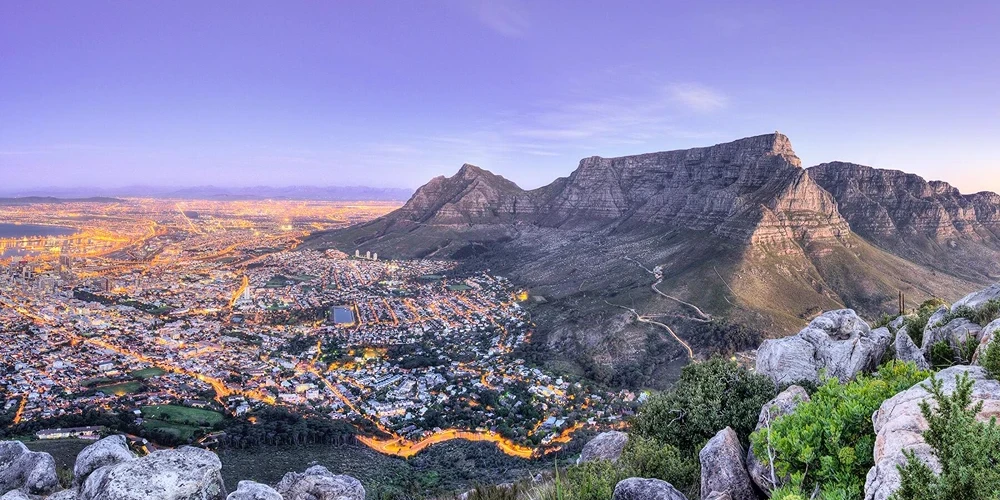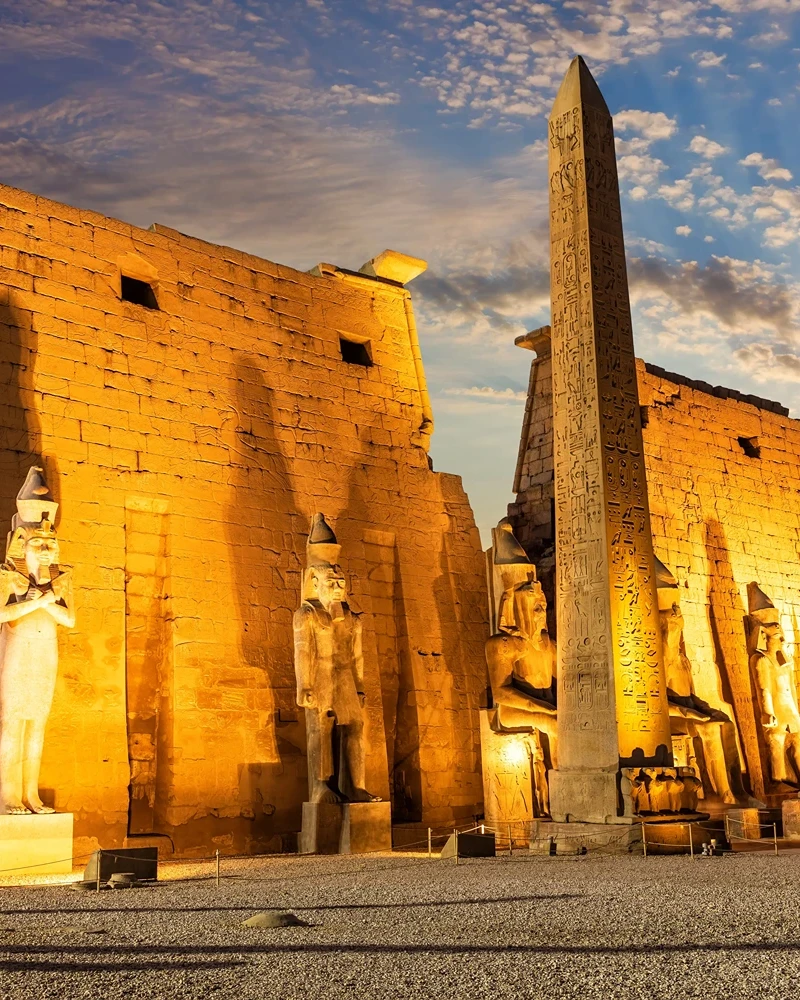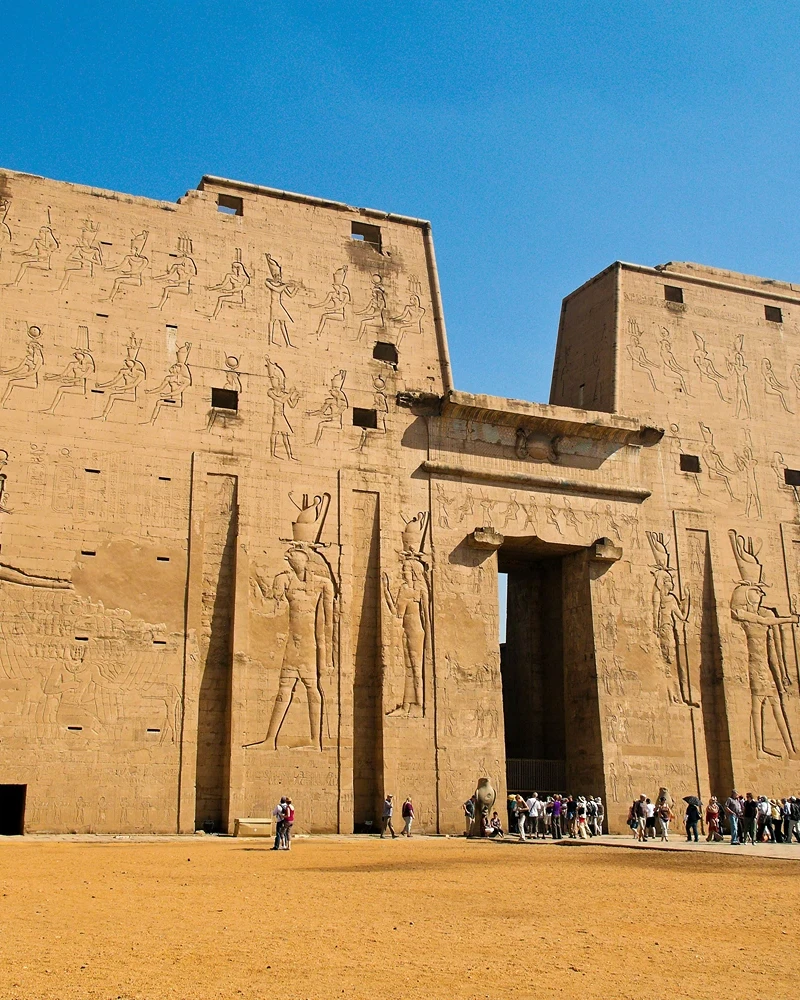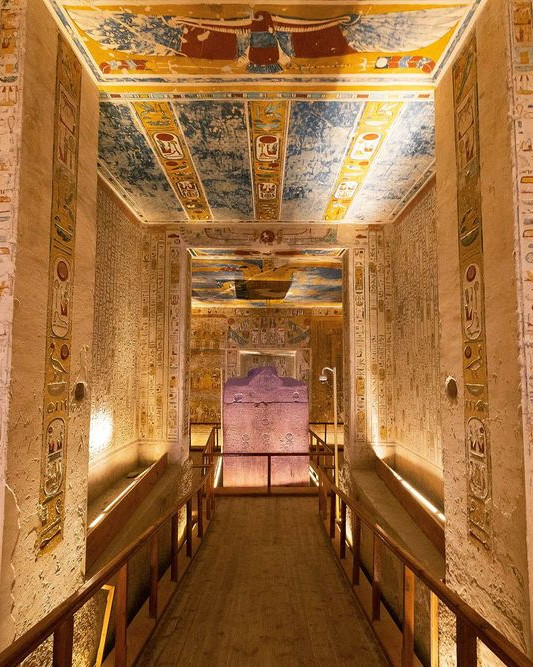Ever wondered what it feels like to gaze upon a mountain that stands as nature’s skyscraper, offering panoramic views and a unique ecosystem? Table Mountain, an iconic landmark in South Africa, rises approximately 1,084 meters above sea level, unfolding a world of majestic vistas and diverse wildlife. As a UNESCO World Heritage Site, this geological marvel draws millions who hike its trails and ride its historic cableway. Delve into the splendor of Table Mountain, where every angle offers a breathtaking perspective and every step uncovers a new facet of its rich biodiversity.
Overview of Table Mountain
Table Mountain, an iconic landmark in South Africa, rises prominently above Cape Town. Known for its flat-topped summit, the mountain’s distinct shape and location make it a geographical marvel. It forms part of the Table Mountain National Park, which spans 57 square kilometers and includes a rich variety of flora and fauna. The mountain’s unique ecosystem is home to many species found nowhere else on Earth.
Standing at approximately 1,084 meters (3,558 feet) above sea level, Table Mountain offers breathtaking views of the surrounding areas. Notable viewpoints include Lion’s Head, Devil’s Peak, and the distant Robben Island. Cape Town’s cityscape can be seen sprawling below, providing a stunning contrast between urban life and natural beauty. Tourists and locals alike flock to these vantage points to capture the panoramic vistas.
As a UNESCO World Heritage Site, Table Mountain holds significant importance for both its natural and cultural heritage. The mountain is home to over 2,200 plant species, many of which are endemic. This biodiversity, combined with its historical and cultural relevance, underscores its importance on both a local and global scale. The mountain’s conservation efforts aim to preserve its unique ecosystem for future generations.
- Height: Approximately 1,084 meters (3,558 feet) above sea level.
- Location: Part of the Table Mountain National Park.
- UNESCO Status: Recognized as a UNESCO World Heritage Site.
- Flora: Home to over 2,200 plant species.
- Views: Offers vistas of Lion’s Head, Devil’s Peak, Robben Island, and Cape Town.
Historical Significance of Table Mountain
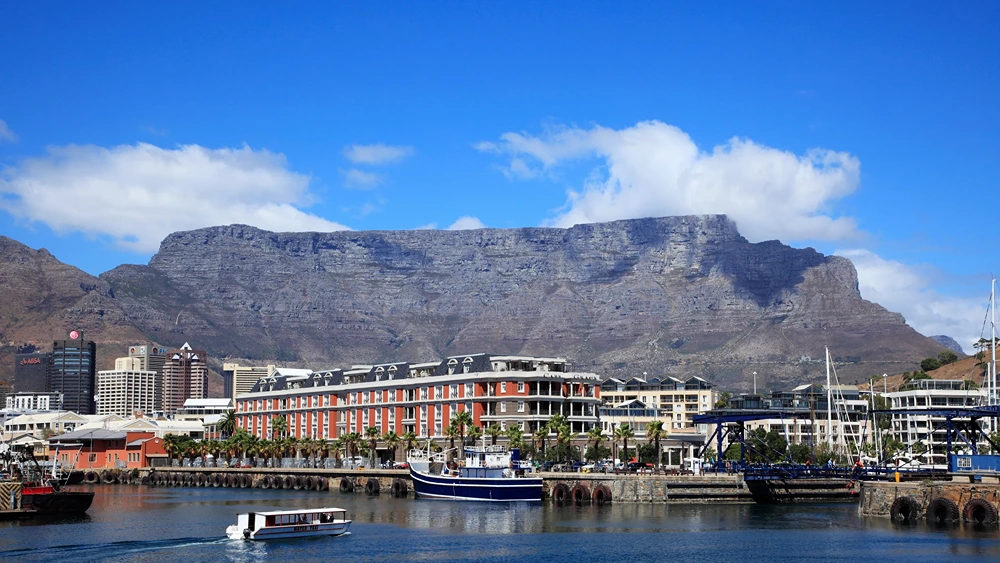
Table Mountain has been a prominent landmark for centuries, serving as a navigational aid to early explorers. Historical references to the mountain date back to the 16th century when Portuguese sailors first sighted its distinctive flat top. The mountain’s unique shape made it an essential point of reference for seafarers navigating the treacherous waters around the Cape of Good Hope.
Myths and legends add a rich tapestry to Table Mountain’s history. Among the most famous is a Khoikhoi legend that attributes the mountain’s flat top to a smoking contest between the Devil and a local hero named Van Hunks. According to the legend, the two engaged in a contest to determine who could produce the most smoke, resulting in the flat-topped appearance we see today. These stories have been passed down through generations, adding a layer of mystique to this natural wonder.
Culturally, Table Mountain holds immense significance for local communities. It is considered a sacred place by indigenous groups, who have long revered it as a spiritual site. The mountain also serves as a symbol of resilience and identity for the people of Cape Town. Its conservation is a priority, ensuring that future generations can continue to appreciate its historical and cultural importance.
Hiking Trails on Table Mountain
Hiking Table Mountain offers an array of trails, each presenting unique challenges and scenic rewards. Popular routes like Platteklip Gorge, Skeleton Gorge, and India Venster cater to varying levels of experience and fitness. No permits are required, but it’s crucial to check weather conditions before embarking on any hike. Safety is paramount: stay on marked paths, hike in groups, and always inform someone of your plans.
Platteklip Gorge
Platteklip Gorge is the most direct route to the summit. The trail begins near the lower cableway station and ascends steeply through a well-defined gorge. Hikers face a strenuous climb with numerous stone steps, making it a challenging but manageable path. The route takes approximately 1.5 to 2.5 hours to complete, depending on fitness levels. Scenic views along the way and at the top offer panoramic vistas of Cape Town and the Atlantic Ocean, making the effort worthwhile.
Skeleton Gorge
Skeleton Gorge starts in the Kirstenbosch National Botanical Garden and is known for its lush, forested terrain. The trail meanders through indigenous Afromontane forest before opening up to fynbos-covered slopes. Hikers encounter several ladders and rocky sections, adding to the trail’s moderate to difficult rating. The hike to the summit takes around 4 to 5 hours. Unique features include the beautiful views of the eastern slopes of Table Mountain and the distant Hottentots Holland Mountains. This route is ideal for those seeking a more adventurous hike with diverse landscapes.
India Venster
India Venster is one of the more challenging trails, requiring a good level of fitness and some scrambling skills. The trail starts at the lower cableway station and follows a contour path before ascending steeply. Hikers must navigate rocky outcrops and exposed sections, making this route suitable for experienced hikers. The hike takes about 2.5 to 3.5 hours to reach the summit. The trail offers stunning viewpoints, including close-up perspectives of the city, Lion’s Head, and the Twelve Apostles range. This trail is perfect for those looking for a thrilling and rewarding hiking experience.
Table Mountain Cableway Experience
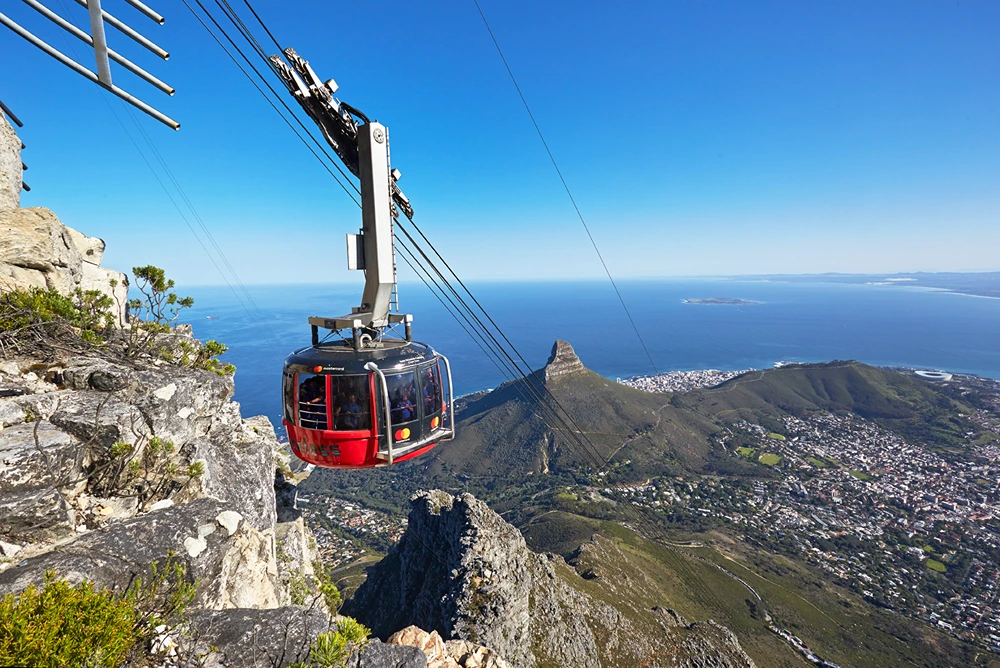
The Table Mountain Aerial Cableway has been a cornerstone of Cape Town tourism since its inauguration in 1929. Initially built to offer a safer and more efficient way to reach the summit, the cableway underwent significant modernization in 1997. This revamp included the introduction of state-of-the-art rotating cable cars, enhancing the experience by providing 360-degree views during the ascent and descent.
The cableway journey itself is a brief yet exhilarating five-minute ride to the summit. These rotating cars can accommodate up to 65 passengers per trip, ensuring that everyone gets a panoramic view of Cape Town, the Atlantic Ocean, and the surrounding landscape. The summit offers multiple viewpoints, each providing breathtaking vistas that capture the natural beauty of Table Mountain and its environs.
- Operational Since: 1929, with a major revamp in 1997.
- Journey Duration: Approximately five minutes.
- Ticket Prices: 420 Rand return for adults, 210 Rand for children.
- Capacity: Each cable car can carry 65 passengers per trip.
Flora and Fauna of Table Mountain
Table Mountain is a biodiversity hotspot, home to over 2,200 plant species, many of which are endemic to the region. The vegetation is dominated by Peninsula Sandstone Fynbos, a type of shrubland that thrives in the nutrient-poor, acidic soils. Another key vegetation type is the Afromontane forest, found in pockets along the mountain’s slopes. These forests add to the ecological richness and are vital for maintaining the overall health of the ecosystem.
The wildlife on Table Mountain is equally impressive, featuring a variety of species adapted to the unique environment. Notable inhabitants include the rock hyrax, also known as the dassie, and the klipspringer, a small antelope adept at navigating rocky terrain. Birdlife is abundant, with species such as the orange-breasted sunbird and the Cape sugarbird adding vibrant colors and dynamic life to the landscape. These animals are integral to the mountain’s ecosystem, contributing to functions like pollination and seed dispersal.
The importance of Table Mountain’s ecosystem cannot be overstated. Conservation efforts aim to protect this unique biodiversity from threats like invasive species and habitat destruction. These initiatives are crucial for preserving the mountain’s natural heritage for future generations. The mountain’s flora and fauna not only enhance its scenic beauty but also play essential roles in sustaining ecological balance.
- Peninsula Sandstone Fynbos: Dominant vegetation type.
- Afromontane Forest: Found in pockets on the slopes.
- Rock Hyrax: Commonly known as dassies.
- Klipspringer: Small antelope species.
- Orange-Breasted Sunbird: Vibrant bird species.
- Cape Sugarbird: Important for pollination.
Best Time to Visit Table Mountain
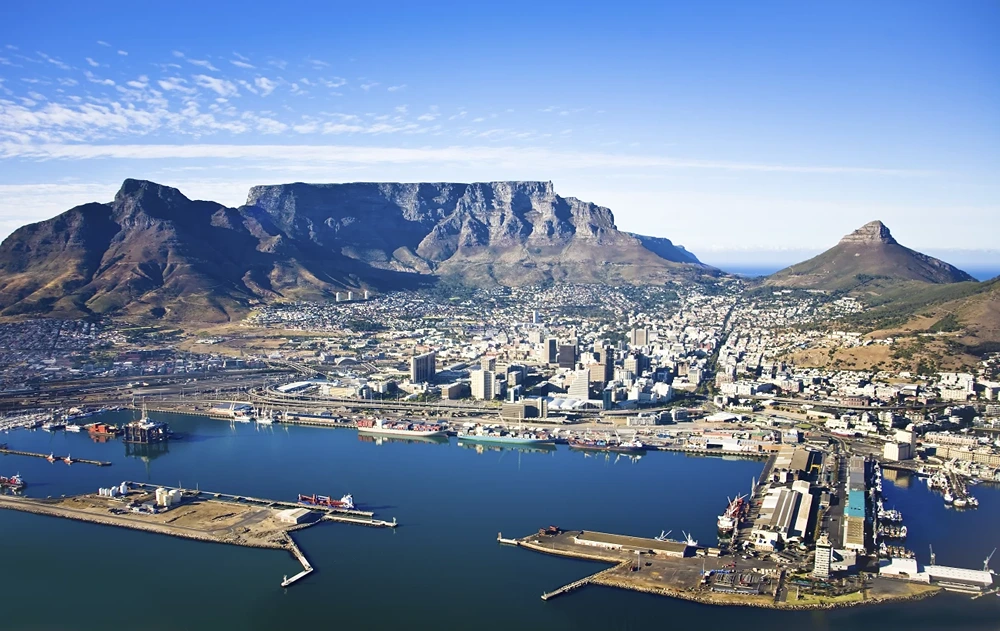
The optimal time to visit Table Mountain is during the South African summer months from November to February. During this period, the weather is generally clear and warm, providing ideal conditions for outdoor activities. Visitors can expect longer daylight hours, which are perfect for hiking and sightseeing. The summer season also offers more predictable weather patterns, reducing the likelihood of sudden changes that could impact travel plans.
Weather conditions play a significant role in the overall experience of Table Mountain. Clear skies enhance visibility, making the panoramic views from the summit more breathtaking. However, it’s important to note that weather can still be unpredictable. Strong winds or fog may temporarily halt cableway operations for safety reasons. Therefore, checking the weather forecast before planning a trip is advisable. This ensures that visitors can make the most of their time on the mountain, whether hiking the trails or enjoying the cableway ride.
Tourist Facilities and Amenities on Table Mountain
The summit of Table Mountain is equipped with various facilities to enhance the visitor experience. A well-stocked curio shop offers a range of souvenirs and memorabilia, allowing tourists to take a piece of the mountain home with them. Additionally, a snack shop provides light refreshments and a convenient place to grab a quick bite. For those looking to relax and enjoy a meal with a view, the summit features a full-service restaurant that offers both indoor and outdoor seating options.
Food and drink options on Table Mountain cater to diverse tastes and preferences. The café at the summit serves a variety of beverages, including hot coffee and cold drinks, perfect for re-energizing after a hike or cableway ride. The restaurant offers an extensive menu of local and international dishes, ensuring that there is something for everyone. Visitors can enjoy their meals while taking in the breathtaking vistas that the mountain provides.
Shopping enthusiasts will appreciate the curio and gift shops available at the summit. These shops offer a wide selection of items, from locally crafted jewelry and artwork to clothing and books. The carefully curated selection ensures that visitors can find unique and meaningful souvenirs to commemorate their trip. The cableway station also houses additional amenities, including restrooms and seating areas, ensuring a comfortable and convenient visit to this iconic landmark.
Safety Tips for Hiking Table Mountain
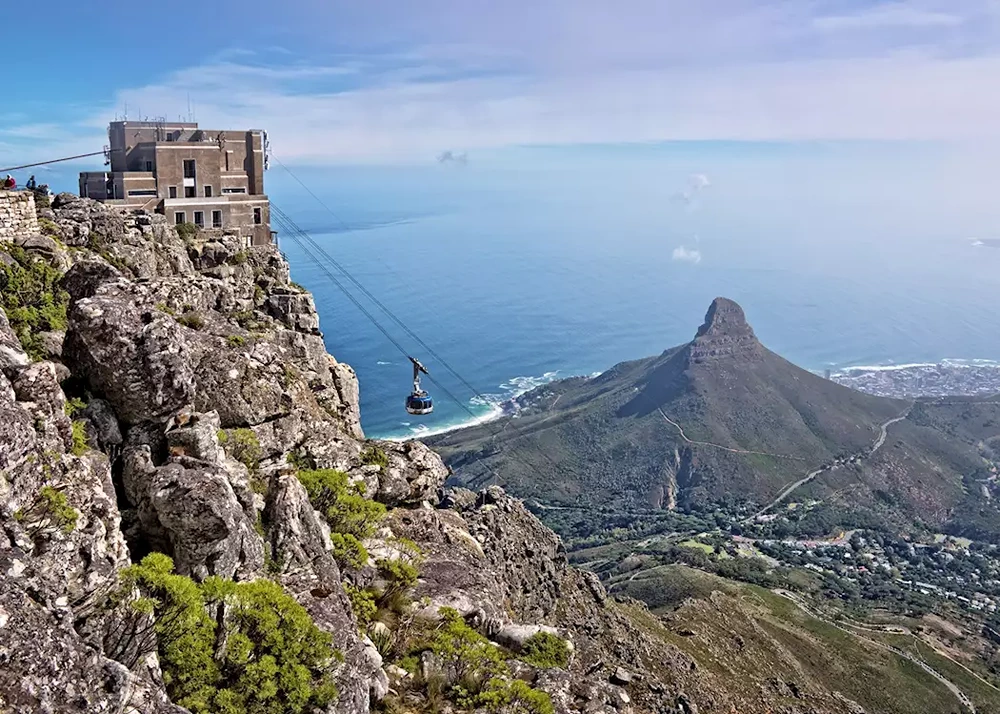
Hiking Table Mountain is a rewarding experience, but it requires adherence to essential safety guidelines. No permits are needed for hiking, making it accessible to all. However, staying on marked paths is crucial to avoid getting lost or encountering dangerous terrain. Hiking in groups enhances safety and provides support in case of emergencies. Always inform someone of your plans, including your intended route and expected return time.
Preparation and planning are vital for a safe hike. Carrying sufficient water is essential to stay hydrated, especially in hot weather. Checking the weather forecast before starting your hike can prevent unpleasant surprises, such as sudden changes in weather conditions that could make the trail hazardous. Proper footwear and attire suited to the terrain and weather conditions contribute significantly to a comfortable and safe hiking experience.
- Stay on marked paths to avoid dangerous terrain.
- Hike in groups for added safety and support.
- Inform someone of your hiking plans and expected return time.
- Carry sufficient water to stay hydrated.
- Check weather conditions before starting your hike.
Nearby Attractions to Table Mountain
Cape Town offers a wealth of attractions near Table Mountain that are worth exploring. Kirstenbosch National Botanical Garden, located at the eastern foot of the mountain, is renowned for its diverse plant species and beautifully landscaped gardens. Visitors can stroll through themed sections and enjoy seasonal flower displays. Another prominent attraction is Lion’s Head, which provides an exhilarating hike and panoramic views of both the city and the Atlantic Ocean. Signal Hill, adjacent to Lion’s Head, offers a more accessible spot for stunning sunset views and the famous Noon Gun firing.
Other points of interest in the surrounding areas include Cape Point and Boulders Penguin Colony. Cape Point, situated within the Cape of Good Hope Nature Reserve, is known for its dramatic cliffs and scenic vistas where the Atlantic and Indian Oceans meet. Boulders Penguin Colony, located near Simon’s Town, provides a unique opportunity to observe African penguins in their natural habitat. These attractions offer a variety of experiences, from hiking and nature walks to wildlife viewing and historical exploration.
- Kirstenbosch National Botanical Garden: Renowned for diverse plant species and landscaped gardens.
- Lion’s Head: Offers a challenging hike with panoramic city and ocean views.
- Signal Hill: Provides accessible sunset views and the Noon Gun firing.
- Cape Point: Known for dramatic cliffs and ocean vistas.
- Boulders Penguin Colony: Home to African penguins near Simon’s Town.
Accommodation Options near Table Mountain
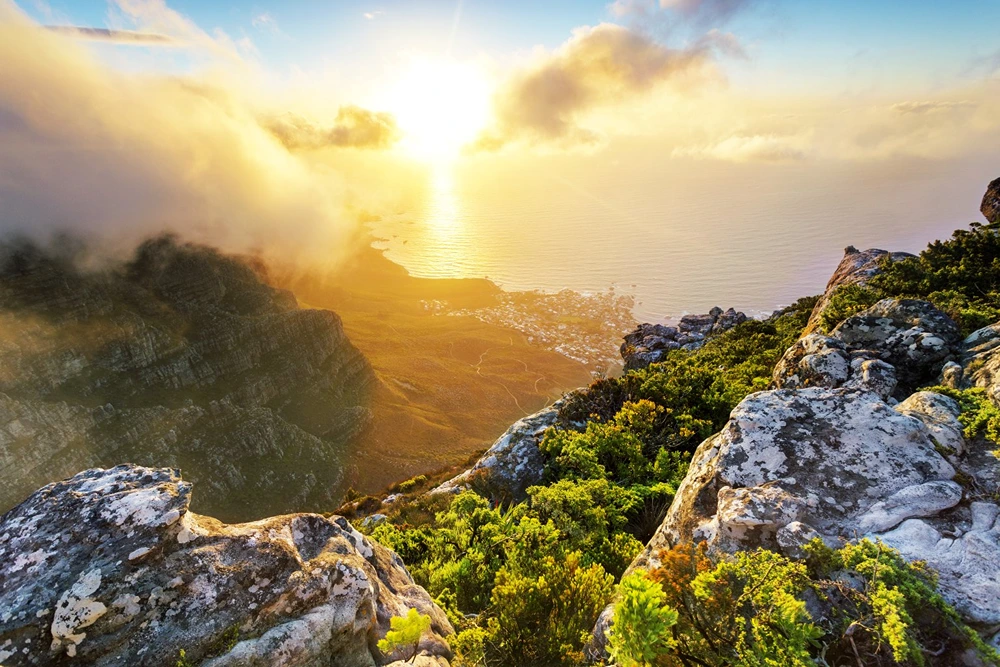
For those visiting South Africa, luxury accommodation options abound near Table Mountain. High-end hotels in Cape Town, such as the One&Only and the Belmond Mount Nelson, offer world-class amenities and breathtaking views of the mountain. These establishments provide top-notch services, including spa treatments, gourmet dining, and personalized experiences, ensuring a memorable stay.
Budget-conscious travelers will find plenty of affordable places to stay. Hostels like Once in Cape Town and guesthouses such as The Backpack offer comfortable lodging at reasonable prices. These budget-friendly options cater to a variety of needs, from dormitory-style rooms to private suites, making it easier for travelers to explore the area without breaking the bank.
Proximity to Table Mountain is a key advantage of staying in these accommodations. Many hotels and hostels are located within a short drive or even walking distance from the mountain’s access points. This convenience allows visitors to easily embark on hiking trails or take the cableway to the summit. The central location also provides easy access to other attractions in Cape Town, enhancing the overall travel experience.
Final Words
The blog post covered the essential aspects of Table Mountain, detailing its height, viewpoints, and significance as a UNESCO World Heritage Site. It explored the mountain’s historical and cultural background, myths, and legends, and provided a comprehensive guide to its popular hiking trails like Platteklip Gorge, Skeleton Gorge, and India Venster.
Additional sections outlined the Table Mountain Cableway experience, its unique flora and fauna, best visiting times, and tourist facilities.
Table Mountain stands as a remarkable natural landmark, offering unparalleled experiences for both nature enthusiasts and history lovers. Whether hiking its trails or admiring the views from the cableway, the mountain remains a must-visit attraction in South Africa.
FAQ
Why is Table Mountain so famous?
Table Mountain is famous for its flat-topped summit, breathtaking scenery, and status as a UNESCO World Heritage Site. It provides panoramic views of Cape Town, Robben Island, and surrounding landscapes.
How much does it cost to go up Table Mountain?
Ticket prices for the Table Mountain Aerial Cableway are 420 Rand return in the morning for adults and 210 Rand for children. Prices can vary depending on the time of day and season.
Is Table Mountain one of the seven wonders of the world?
Table Mountain is not one of the traditional Seven Wonders of the World but is listed as one of the New7Wonders of Nature, reflecting its global significance and natural beauty.
Is Table Mountain free on your birthday?
Yes, Table Mountain offers a free cableway ticket to individuals on their birthday. Identification proof is required to redeem this offer.
What are some Table Mountain facts?
- Table Mountain stands approximately 1,084 meters above sea level.
- It is part of Table Mountain National Park, a UNESCO World Heritage Site.
- The park covers 57 square kilometers.
- Home to over 2,200 plant species.
- Offers views of Lion’s Head, Devil’s Peak, and Robben Island.
How do I get to Table Mountain?
Table Mountain is accessible via public transport, taxis, and private vehicles. Directions are well-marked, with ample parking available at the cableway station.
What can I see from the Table Mountain summit?
From the summit, you can see panoramic views of Cape Town, Table Bay, Robben Island, the Atlantic seaboard, and the Cape Flats.
Top Attractions
Imagine walking through a gateway to a bygone era, where…
Why would an ancient civilization dedicate 180 years to…
Why did the ancient Egyptians choose a secluded desert…


